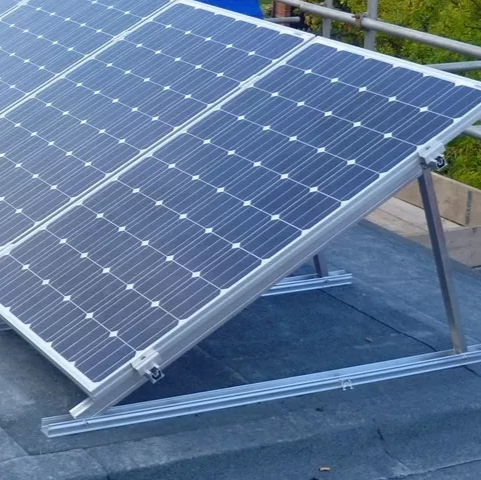


Views: 0 Author: Site Editor Publish Time: 2025-09-08 Origin: Site









LiFePO4 batteries are known for their safety, but can they still catch fire? As the demand for these batteries grows, so does the need for proper safety knowledge.In this post, we’ll explore why understanding LiFePO4 fire risks is crucial. You’ll learn about their common uses, potential fire causes, and how to prevent accidents.

LiFePO4 batteries are widely regarded as safer than other lithium-ion batteries. Their stable chemical structure and non-flammable electrolyte make them much less likely to catch fire or explode under normal conditions. Unlike other lithium-ion batteries, which use flammable materials, LiFePO4's phosphate-based cathode is much more heat-resistant and chemically stable. This is why they are commonly used in solar energy storage, electric vehicles, and emergency backup systems.
While LiFePO4 batteries are far safer than other types, they are not completely fire-proof. Extreme conditions, such as overcharging, puncturing, or physical damage, can still lead to a fire. However, compared to other lithium-ion chemistries, they are much less prone to thermal runaway. This makes them a safer option, but it's important to handle them properly to minimize the risk of accidents.
LiFePO4 batteries are generally safe, but they can still catch fire under certain conditions. The most common causes include:
Physical Damage: When the battery is punctured, crushed, or subjected to heavy impacts, the internal components can be damaged, potentially causing a fire.
Overcharging: Using incorrect or faulty chargers can lead to overheating, which increases the risk of fire.
Manufacturing Defects: Poorly made batteries with manufacturing flaws can fail unexpectedly, posing a fire hazard.
Yes, overcharging can cause overheating and increase the risk of a fire. When a battery is charged beyond its safe limit, the temperature rises and the chemical reactions inside can become unstable. This is why it's important to use a Battery Management System (BMS), which automatically prevents overcharging by monitoring the charge level and shutting off the current when necessary.
Thermal runaway is a dangerous situation where a battery’s temperature rises uncontrollably, leading to a self-sustaining reaction. In lithium-ion batteries, this can result in a fire or explosion. While LiFePO4 batteries are much less prone to thermal runaway than other lithium-ion batteries, it is still possible under extreme conditions, like overcharging or physical damage. The stable chemistry of LiFePO4 helps prevent this issue, making it a safer option for most applications.
If a LiFePO4 battery catches fire, it’s important to act quickly and safely:
Evacuate: Immediately leave the area. The fire can release harmful smoke and toxic fumes. It's critical to get to a safe distance.
Call Emergency Services: Dial 911 or your local emergency number. Let them know it’s a battery fire. Firefighters are trained to handle these types of incidents.
Do Not Use Water: Never use water to extinguish a lithium battery fire. Water can react with the chemicals in the battery, making the fire worse.
Keep Flammables Away: If it's safe to do so, move other combustible materials away from the fire. This prevents the fire from spreading.
Firefighters use specific techniques and equipment to manage lithium-ion battery fires:
Specialized Tools: Firefighters typically use dry chemical fire extinguishers or Class D fire extinguishers to tackle battery fires. Water should be avoided at all costs.
Controlled Cooling: In some cases, firefighters may cool the battery with specialized agents to prevent further overheating or re-ignition.
Removal and Disposal: After the fire is under control, firefighters will safely remove and dispose of the damaged battery. They are trained to handle the hazardous materials properly.
To minimize the risk of fires, follow these best practices:
Use a Battery Management System (BMS): A BMS prevents overcharging and over-discharging. It ensures the battery operates within safe limits, reducing the chance of overheating and fire.
Protect from Physical Damage: Handle and store batteries carefully to avoid punctures or crushing. Always store them in protective cases and avoid dropping them.
Store in a Cool, Dry Place: Extreme temperatures can damage the battery and increase fire risk. Store your LiFePO4 batteries in a cool, dry location away from direct sunlight or heat sources.
Storing LiFePO4 batteries fully charged is not recommended for long-term storage. Here’s why:
Safety Risks: Keeping a battery at full charge for extended periods can cause stress on the battery and increase the risk of thermal runaway.
Recommended Charge Level: For safe long-term storage, keep the battery charge level between 50% and 75%. This helps prevent degradation and minimizes the risk of fire while keeping the battery in good condition for future use.
LiFePO4 batteries are increasingly used in homes, especially for solar power systems, backup generators, and emergency power solutions. They are considered safer than other lithium-ion batteries due to their stable chemistry. Unlike other types of lithium-ion batteries, LiFePO4 batteries are less prone to overheating, thermal runaway, or explosions. This makes them a popular choice for home use, where safety is a top priority.
These batteries provide a reliable energy source for homes, especially in off-grid situations or during power outages, while offering higher durability and safety compared to other lithium-ion chemistries.
Storing LiFePO4 batteries at home is generally safe, but there are some precautions to consider:
Temperature Sensitivity: Extreme temperatures can affect battery performance and lifespan. Store the batteries in a cool, dry place away from heat sources or direct sunlight.
Proper Ventilation: Ensure the storage area is well-ventilated. If the battery is charged incorrectly, it can overheat, even if LiFePO4 batteries are less likely to cause a fire than other lithium-ion types.
Avoid Overcharging: When storing, do not fully charge the battery. A charge level between 50% and 75% is ideal for long-term storage, reducing the risk of stress or damage.
By following these storage guidelines, you can safely store LiFePO4 batteries at home without significant risks.
A common myth is that LiFePO4 batteries are completely fireproof. While they are significantly safer than other lithium-ion batteries, they are not immune to fire. In extreme conditions, such as overcharging, puncturing, or physical damage, LiFePO4 batteries can still catch fire. The misconception comes from their stable chemistry, which makes them less prone to overheating or thermal runaway compared to other types. However, it is still crucial to follow proper usage and maintenance to minimize risks.
Several other myths surround LiFePO4 batteries:
Lifespan: Some believe LiFePO4 batteries last forever. While they have a longer lifespan than other lithium-ion batteries, they still degrade over time, especially if not stored or maintained correctly.
Cost-Effectiveness: People often assume LiFePO4 batteries are more expensive than other options. While they can have a higher upfront cost, their long cycle life and safety features often make them a more cost-effective choice in the long run.
Overall Safety: LiFePO4 batteries are indeed safer, but they aren't risk-free. They still need to be handled with care, and improper usage or neglecting maintenance can lead to safety concerns.
By understanding these misconceptions, users can make more informed decisions about using and maintaining LiFePO4 batteries.

While LiFePO4 batteries are considered safer than other lithium-ion batteries, there have been incidents where they caught fire. For example, in a warehouse setting, a LiFePO4 battery was damaged during transport, causing a fire. The damage likely led to a short circuit, which ignited the battery. In another case, an overcharging incident caused excessive heat, which eventually led to a fire. Fortunately, the fire was contained quickly, thanks to the use of proper fire safety measures and quick response by trained personnel.
These incidents highlight the importance of handling and charging batteries properly to prevent similar events.
Past incidents provide valuable lessons on preventing future LiFePO4 battery fires:
Proper Storage and Handling: Ensure batteries are stored in safe, cool environments and avoid physical damage during transport or use.
Monitoring Charging: Use only compatible chargers and avoid overcharging to prevent overheating and potential fires.
Use of Battery Management Systems (BMS): A BMS helps prevent overcharging and monitors battery health, reducing the likelihood of accidents.
By learning from these real-world examples, we can improve safety measures and reduce risks associated with LiFePO4 batteries.
LiFePO4 batteries are generally safe and offer lower fire risks compared to other lithium-ion batteries. Their stable chemistry and non-flammable electrolyte make them a safer choice for various applications.To ensure safety, always use a Battery Management System (BMS), avoid overcharging, and store the batteries in cool, dry conditions. Proper handling and regular maintenance are key to preventing accidents. LiFePO4 battery safety.